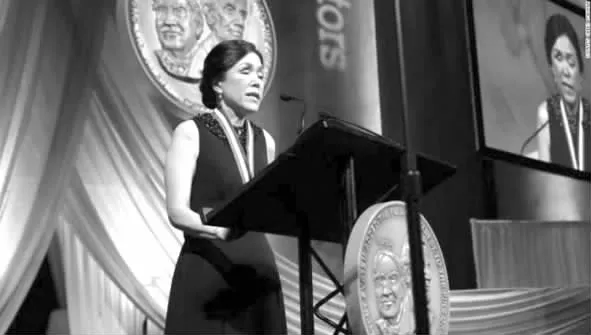河北 胡金莹

?
难词探意
1. vibration /vaɪ΄breɪʃn/ n. 震动
2. accessibility /əkˌsesə΄bɪləti/ n. 易接近
3. impaired /ɪm΄peəd/ adj. 受损的
4. spatial /΄speɪʃl/ adj. 空间的
5. component /kəm΄pəʊnənt/ n. 组成部分;部件
Walking in an airport with endless gates is never easy.Now imagine doing it if you were blind. That's the challenge faced by Chieko Asakawa, a computer scientist. In order to search for a better way, Asakawa has invented a high-tech suitcase that helps get her to her destination safely and easily.
Packed with cameras and sensors, the suitcase uses artificial intelligence (AI) to map the environment around it. A mobile phone app is used to program a destination into the suitcase, which plans a route and directs the user throughvibrationsin its handle.The suitcase also features facial recognition technology, which can inform the user if a friend is nearby. It can also flag shops and other places of interest nearby and direct the user to them if necessary.
As a keen runner, Asakawa had Olympic dreams as a child, but a swimming accident caused her to lose her sight. As an adult she is already thinking about developingaccessibilitytechnology. “I never relax when I travel alone,” she says. “I always think about what technology will help me travel more easily, quicker and more comfortably.”

The suitcase has other applications and could be used to help visuallyimpairedpeople navigate cities, while its object-recognition technology can be used to identify colors—useful when buying clothes. Perhaps its best benefit is that it allows users to devote mental energy to other things.With AI providing spatial awareness, a blind person can do many other things: take a call or listen to the birds.Public spaces become places to be enjoyed, not just navigated. “It will open up many doors for blind people, because we'd be able to go anywhere by ourselves,” says Asakawa. The technology will naturally develop,she predicts,ascomponentsbecome smaller,lighter and more powerful.
Without new technology, we cannot change our society. A smart suitcase is a great showcase for how AI and technology can change the lives of people with visual disabilities.
Reading
Check
1. Why did Asakawa invent the robot suitcase?
A. To offer help to the blind.
B. To make her journey safe and easy.
C. To avoid endless gates in the airport.
D. To search for the charm of technology.
2. What is used to program a destination into the suitcase?
A. A camera. B. A sensor.
C. A mobile phone app. D. Facial recognition technology.
3. What's Asakawa's attitude towards the suitcase's future?
A. Positive. B. Unclear. C. Pessimistic. D. Indifferent.
4. What's the greatest advantage of the robot suitcase?
A. It can guide ways for users.
B. It allows users to enjoy their life.
C. It can help users recognize colors.
D. It permits users to devote mental energy to other things.
Language
Study
Sentence for writing
With AI providing spatial awareness, a blind person can do many other things: take a call or listen to the birds.
【信息提取】With AI providing spatial awareness是with的复合结构,AI和provide之间构成逻辑上的主谓关系。
【句式仿写】随着科学家们夜以继日地研究,人类在抗击疾病方面取得了重大突破。



